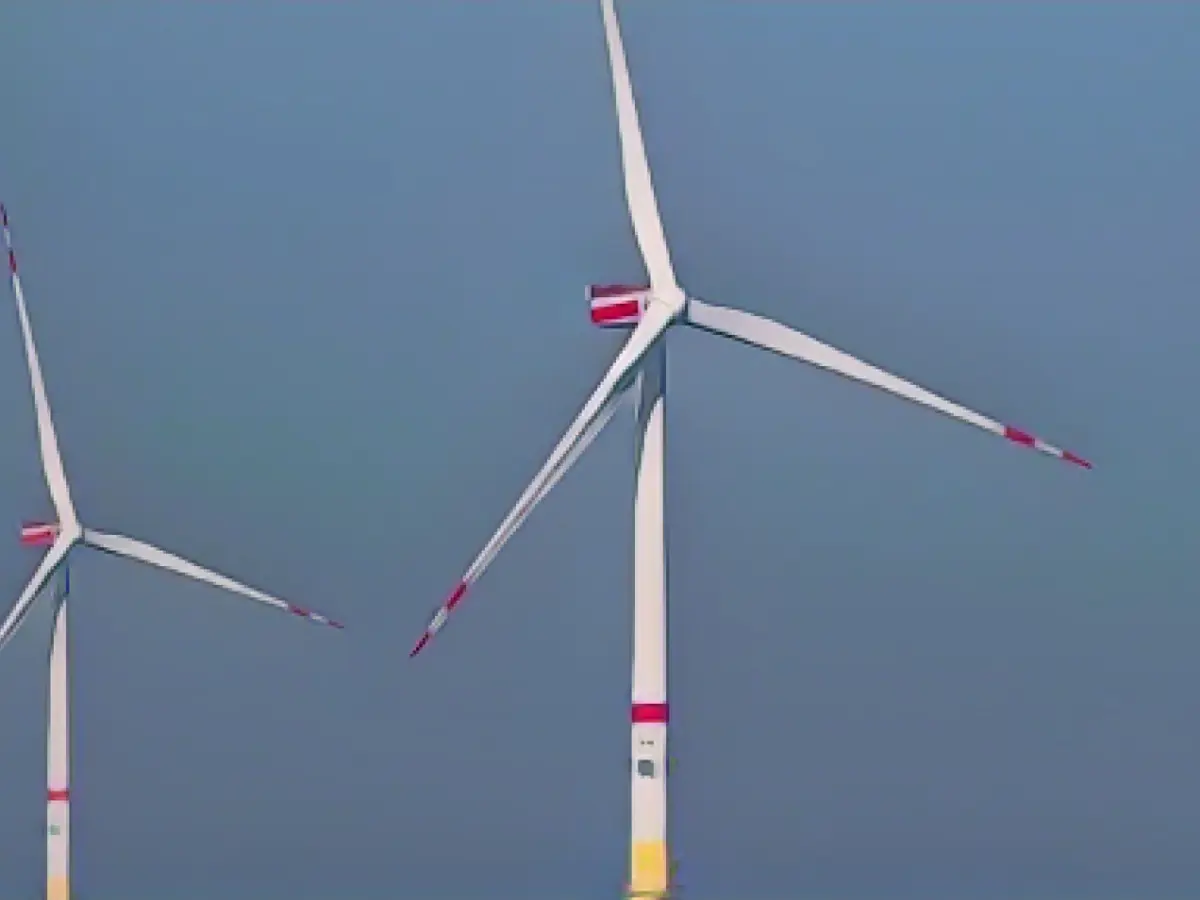Energy - Baltic Sea wind farm Arcadis Ost 1 off Rügen fully connected to the grid
Another wind farm off the island of Rügen is now fully connected to the grid. All 27 wind turbines at Arcadis Ost 1 have been supplying electricity since the beginning of December, Manfred Dittmer, Head of Germany at the Belgian energy company Parkwind, told the German Press Agency. According to the company, the wind farm has a capacity of 257 megawatts and can supply up to 290,000 households. Part of the farm was already connected to the grid at the beginning of the year.
The first foundation for the wind farm in the Baltic Sea was installed in June 2022. Parkwind announced the installation of the last turbines in mid-November of this year.
According to Dittmer, the construction was a technical challenge. "In addition to the 45 meter water depth, there was also a layer of non-bearing mud and silt up to 30 meters thick in some places." For this reason, ships that are firmly attached to the seabed were not used as usual. Instead, according to Parkwind, this is the world's first wind farm to be built using only free-floating cranes. Among other things, the second largest floating crane in the world was used. The tubular foundations alone were up to 110 meters long and weighed around 2000 tons.
"I wish we could have had the installation port on the island of Rügen, for example," said Dittmer. But there wasn't enough space there. "We therefore had to switch to the island of Bornholm, which I personally thought was a shame." However, the wind farm is to be maintained from Mukran on the island of Rügen. In his own words, Dittmer supports an appeal by the wind power industry to ensure sufficient German port infrastructure.
The Offshore Wind Energy Foundation published an analysis at the beginning of the week, according to which up to 200 hectares of additional heavy-duty space will be needed for the construction of new offshore wind farms in German seaports by 2029. This corresponds to a parking lot with 260,000 cars or 270 soccer pitches. Investments in the billions would be needed. In view of ambitious expansion targets for offshore wind power, there is talk of a major shortage of port capacity.
According to Dittmer, the so-called thread break - an interruption in offshore expansion after a previous federal government had questioned it in part - has been overcome. Offshore wind power is developing into the backbone of the energy transition. One advantage is the greater energy yield compared to solar energy or onshore wind power. The predictability of the wind yield is also much better at sea. Dittmer spoke of the "power plant properties of offshore wind". "The volatility is not completely gone, but it is less than onshore and it is more predictable."
According to the Offshore Wind Energy Foundation, more than 1.3 gigawatts (GW) of capacity have been installed in the German Baltic Sea. Next year, the Baltic Eagle wind farm operated by energy company Iberdrola with 476 megawatts is also due to go into operation off the island of Rügen. Further wind farms are planned in the Baltic Sea.
Including the North Sea, the German government plans to expand offshore wind power to a capacity of 30 GW by 2030 and 70 GW by 2045. This corresponds to an expansion of 62 GW within the next 22 years and will require up to 7,000 new offshore wind turbines, according to industry figures.
Offshore Wind Energy Foundation Arcadis Ost 1
Read also:
- Returns cost online retailers an average of five to ten euros
- Wild animals also suffer from the masses of snow in southern Bavaria
- Robber threatens restaurant employee with firearm
- 21-year-old seriously injured in an accident at work
- The Baltic Sea wind farm Arcadis Ost 1, located off the coast of Mukran in Mecklenburg-Vorpommern, Germany, is fully connected to the grid.
- Construction of the Arcadis Ost 1 wind farm in the Baltic Sea was a technical challenge due to the deep seabed and a layer of non-bearing mud and silt.
- Instead of using ships firmly attached to the seabed, the world's first wind farm to be built using only free-floating cranes was constructed in the Baltic Sea.
- The German Federal Government has ambitious expansion targets for offshore wind power, planning to increase capacity in the Baltic Sea to 30 GW by 2030 and 70 GW by 2045.
- The Baltic Sea wind farm Arcadis Ost 1, operated by the Offshore Wind Energy Foundation, has a capacity of 257 megawatts and can supply up to 290,000 households with electricity.
- The Federal Government has received a reprimand from environmental groups for its slow progress in transitioning to alternative energies, with a focus on expanding offshore wind power.
- Offshore wind energy is developing into the backbone of Germany's energy transition, providing a more stable and predictable energy yield compared to solar energy or onshore wind power.
- The Sassnitz-Mukran port in Mecklenburg-Vorpommern is currently undergoing expansion to accommodate the construction and maintenance of offshore wind farms in the Baltic Sea.
Source: www.stern.de








